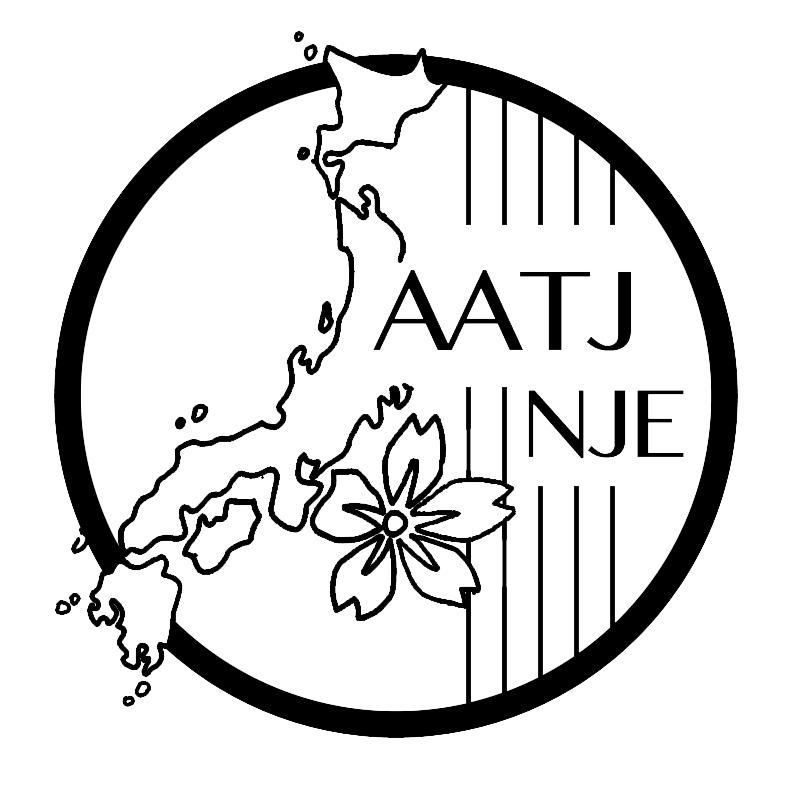Frequently Asked Questions よくある質問
Frequently Asked Questions about Registration and Test Administration
登録、試験実施についてよくある質問
A teacher can register as many students as he/she wants.
人数制限はありません。何人でも登録可能です。
You also add students by uploading a spreadsheet formatted as a .csv file in Excel. Your spreadsheet should contain two columns: – *First name* – students’ first names – *Last name* – students’ last names. Enter each student name in a separate row, starting with Row 2. (Row 1 should say “First name” in Column 1 and “Last name” in Column 2.) The uploaded additional student names will be added to the list of students already entered above. Then you need to add the level for each student manually after the new names are entered.
できます。.csvファイルで “first name”の欄と”last name”の欄が別に必要です。2段目からそれぞれの受験者名を姓名別の欄に記入します。アップロードが完了したら、ウェブ上の登録ページに自動的に名前が追加されます。各受験者のレベル、カテゴリーは登録ページ上で入力できます。
No, unfortunately, once the registration period is over, you cannot register any more students. Please note that even if a teacher already has an account, she or he cannot add students or replace one registered student with another student.
できません。登録期間終了後は受験者の追加、名前の変更などはできません。
No, you have to register the students giving their names. However, you can substitute a student during the registration period (but not after), and as long as the number of students who take the exam is the same as the number you registered for, you will not be charged an additional fee. If you need to substitute a student, simply add him or her to the roster for the appropriate level and ignore the entry for the original student. A new username and password will be generated for the student. Be sure that the student uses the new username when taking the exam. As long as the original student does not take the exam, you will not be charged an additional fee. Please make all these changes within the registration period.
できません。名前の登録が必要です。登録期間内であれば(期間終了後は不可)、登録人数が変わらなければ、受験者の名前を変更することは可能です。 受験者にはそれぞれ個人のユーザーネームとパスワードが与えられますが、名前を変更した場合は、ユーザーネームとパスワードも変更されます。新しいユーザーネームとパスワードをお使いください。変更前の受験者が受験しない限り、新たに受験料が発生することはありません。全ての変更修正は登録期間内にお済ませください。
できます。ただし、先生が登録し、試験監督をする必要があります。
Yes, he/she is eligible. However, we made a note about students who have advantageous backgrounds on the website here:
About students who have advantageous learning backgrounds:
- This exam is open to all students whose teachers consider them appropriate to take it.
- We consider as having special backgrounds students who have grown up in a home where Japanese is the primary language used for communicating with at least one family member, students who have enrolled in a Japanese immersion program (including dual language and bilingual programs) for 3 years or more during Grades 4-8, and students who have lived in Japan for more than one school year (after age 10).
- For Level 3, please enter such students in the ADDITIONAL Category.
できます。ただしカテゴリーが変わります。詳細はこちらをご覧下さい。
NJEは以下のような特殊な学習歴・言語環境がある学習者はレベル3の試験が受けられます。Additionalのカテゴリーで申し込んでください。
- 家庭での使用言語が日本語で家族の最低一人と日本語でコミュニケーションをとってきた者
- 4−8年生の間に3年以上イマージョンプログラムに在籍していた者
- 10歳以後において、1学年以上日本に在住していた者
- 過去3年間に6ヶ月以上日本で学習した者
Yes, you can, as long as you give the exam within the exam period.
試験期間内であればいつでも実施できます。
The exam will be TIMED. Each section of the exam will be timed, and the exam window will be automatically closed after the time is up. The times are listed below. Approximately five extra minutes to complete personal information will be given. When the time is up, the exam windows will be closed.
Listening: 25 min. (20 min. for the exam + 5 min. for completing the NJE Test Security and Academic Integrity Policy)
Reading: 42 min. (including 35 min. exam time + 7 min. for completing Student Personal Information and the NJE Test Security and Academic Integrity Policy)
NJEには制限時間があります。制限時間が来たら自動終了となります。なお、情報入力のための時間が(5分、または7分)試験時間に加算されます。
リスニング:25分(試験時間20分+同意書にへの入力5分)
リーディング:42分(試験時間35分+受験者情報入力と同意書への入力7分)
The test is administered entirely online using the Quia platform and technology. The technical requirements for test-taking can be viewed at www.quia.com/help/tech/
NJEの試験は全てオンラインで行われます。
Yes, we would like to accommodate students with special needs. Students with an IEP who receive accommodations under IDEA guidelines on standardized tests may receive the same accommodations on the National Japanese Exam. To make arrangements for students with special accommodations, the teacher should contact nje@aatj.org at least TWO WEEKS prior to the exam day.
はい、個別対応が必要な学習者も受験できます。IDEAのガイドラインで個別対応資格を受けたIEP学習者は、NJEでも同じ条件を適用できます。試験日の2週間前までに nje@aatj.orgに問い合わせください。
Frequently Asked Questions about the content of the NJE
試験内容についてよくある質問
A standards-based curriculum utilizes many “authentic” materials (or “realia”) to prepare students for real-world situations and texts in Japanese. For the purposes of this test, we looked at authentic materials, such as advertisements, announcements, and schedules from Japan, and revised them slightly to make them more appropriate for and legal to use in a test-taking environment. These are called “quasi-authentic materials.”
日本語での実社会、実生活での対応力をつけるために、スタンダーズベースのカリキュラムでは「オーセンティック」な教材が幅広く使われています。NJEも広告、アナウンス、スケジュールなど生教材を、各レベルに適するように、また合法使用となるように若干修正を加えています。このような教材は”quasi-authentic”と呼ばれています。
You can determine the kanji that may be used on the exam by the description of the thematic and cultural areas and the proficiency expectation for the exam. For example, one could assume that kanji that are “pertaining to a limited number of basic personal and social needs” and would come up in weather-related discussions may be included in the Level 2 test. Because the test uses quasi-authentic materials, it is possible that students will encounter kanji that they have not seen before; however, no question will be entirely dependent upon a student understanding a given kanji without very “strong contextual support.” Students should practice using skills in which they figure out the meaning of a given kanji or word by using contextual support of the entire text.(See NJE Guidelines.)
テーマ、文化分野、そして試験のレベルの目安(NJE Guidelines)をもとに試験のテキストでも使われていそうな漢字を推測することができます。例えば、「基本的で身近な状況における限られた数」の「天気に関連する」漢字がレベル2では要求されるであろうことがわかります。NJEはProficiency-basedの試験であり、quasi-authenticのものを試験教材として使っているため、授業では未習の漢字が使用されている可能性もあります。しかし、文脈の中から推測できるようになっており、その漢字一つが分からないと答えられないような問題はありません。 ある一つの漢字知識のみに理解を左右されるのではなく、現実に近い状況で、未習項目を恐れない力、文脈から読み取る(聞き取る)力を奨励し、また、プロフィシェンシーに焦点を当てたティーチング、学習を奨励します。
You can determine the vocabulary that may be on the exam by the description of the thematic and cultural areas and the proficiency expectation for the exam. For example, one could assume that vocabulary that are “pertaining to a limited number of basic personal and social needs” and would come up in school-related discussions may be included in the Level 2 test. For example, the vocabulary words for school subjects and items used in school may appear. Because the test uses quasi-authentic materials, it is possible that students will encounter vocabulary that they have not seen before; however, each written or audio text will contain “strong contextual support.” Students should practice using skills in which they figure out the meaning of a given vocabulary word by using contextual support of the entire text. (See NJE Guidelines.)
テーマ、文化分野、そして試験のレベルの目安(NJE Guidelines)をもとに試験のテキストでも使われていそうな語彙を推測することができます。例えば、「基本的で身近な状況における限られた数」の「天気に関連する」語彙がレベル2では要求されるであろうことがわかります。上記2番の回答にもあるように、NJEはProficiency-basedの試験であり、quasi-authenticのものを試験教材として使っているため、授業では未習の語彙が使用されている可能性もあります。しかし、文脈の中から推測できるようになっており、その語彙一つが分からないと答えられないような問題はありません。 ある一つの語彙知識のみに理解を左右されるのではなく、現実に近い状況で、未習項目を恐れない力、文脈から読み取る(聞き取る)力を奨励し、また、プロフィシェンシーに焦点を当てたティーチング、学習を奨励します。
You can determine the grammar that may be on the exam by the description of the thematic and cultural areas and the proficiency expectation for the exam. For example, one could assume that grammar that are “pertaining to a limited number of basic personal and social needs” and would come up in weather-related discussions may be included in the Level 2 test.
Because the test uses quasi-authentic materials, it is possible that students will encounter grammar that they have not seen before; however, each written or audio text will contain “strong contextual support.” Students should be exposed to a wide variety of authentic and quasi-authentic materials to give them exposure to naturally occurring grammar and to prepare them for this exam. (See NJE Guidelines.)
テーマ、文化分野、そして試験のレベルの目安(NJE Guidelines)をもとに試験のテキストでも使われていそうな漢字を推測することができます。例えば、「基本的で身近な状況における限られた数」の「天気に関連する」文法がレベル2では要求されるであろうことがわかります。
NJEはProficiency-basedの試験であり、quasi-authenticのものを試験教材として使っているため、授業では未習の文法が使用されている可能性もあります。しかし、文脈の中から推測できるようになっており、その文法一つが分からないと答えられないような問題はありません。 ある一つの文法知識のみに理解を左右されるのではなく、現実に近い状況で、未習項目を恐れない力、文脈から読み取る(聞き取る)力を奨励し、また、プロフィシェンシーに焦点を当てたティーチング、学習を奨励します。
The best way to prepare students for the NJE is to expose them to a variety of real-world, authentic, and quasi-authentic materials and situations. For example, if you are working on a unit about “Going Shopping” you can use actual newspaper advertisements from Japan and teach them to search for particular words, prices, dates of the sales, etc. They can listen or view various television commercials taken from YouTube or read a short article about foods in Japan and answer comprehension questions in English about the topic and some simple details, such as the foods mentioned, prices, etc. The key is for students to become comfortable using interpretive skills to figure out the main idea and simple details, even when the text they are reading, listening to or viewing is not 100% comprehensible to them. For more examples, see sample questions.
実社会、実生活で使われている教材や状況にできるだけ触れさせることが重要でしょう。例えば、「買い物」のユニットでは、折り込み広告を使ったり、キーワードを探させたりすることも可能です。テレビコマーシャルを見させせたり、食べ物に関連する記事などを使って大意の理解を図る質問や値段やその食べ物の簡単な詳細を問うような質問を投げかけてもいいでしょう。聞くもの読むもの全てがわからなくても、大意や基本的な詳細を理解するスキルを使えるようになることが大切です。サンプル問題はこちらをご覧ください。


